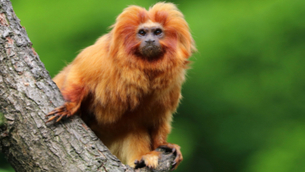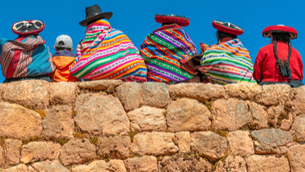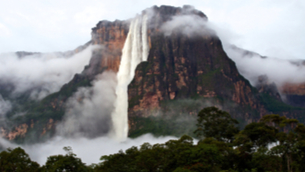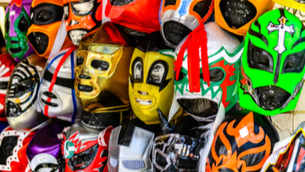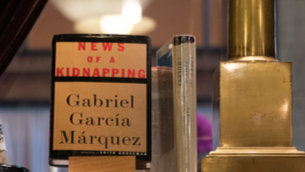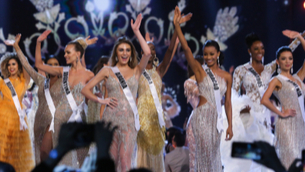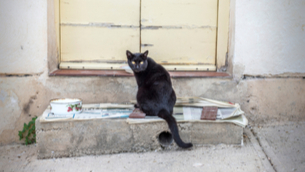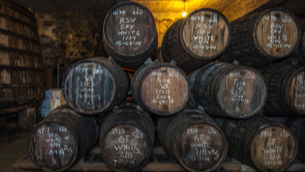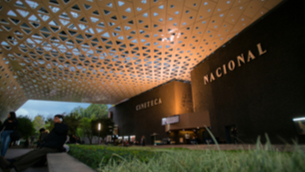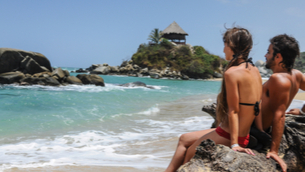Where the wild things… were
Ser & Estar (Past)
| Ceci: | Rylan, ¿eres amante de los viajes? |
| Rylan: | ¿Qué tipo de pregunta es ésa, Ceci? Sabes muy bien que sí, ¡soy fanático de los viajes! |
| Ceci: | Y, ¿eres turista de ciudad, o eres turista de naturaleza? |
| Rylan: | Pues, yo soy una persona abierta, I’m open minded. Soy feliz en la ciudad y soy feliz en la naturaleza. |
| Ceci: | Y si te digo que existe un lugar donde los delfines son rosados y los monos tienen cabeza de león, ¿estás interesado? |
| Rylan: | ¡Ah! Es una fantasía! ¿Es una película? ¿Es una obra de teatro? |
| Ceci: | No, Rylan, no es fantasía, ese lugar existe! Es real. En el Amazonas, encontramos el famoso delfín rosado. |
| Rylan: | Es rosado, rosado? Like, pink, pink? |
| Ceci: | ¡Sí! |
| Rylan: | Wow! Tell me about the monkey with the head of a lion. |
| Ceci: | También es del Amazonas. Es el “Tamarino León dorado”. Es un mono – a monkey – con una melena dorada que parece de león… A golden mane of hair that makes him look like a lion! |
| Rylan: | I could spend a lifetime in the Amazon and only touch the surface. There’s so much to see! |
| Ceci: | ...and did you see what I just did? |
| Rylan: | You took us for a walk on the wild side? |
| Ceci: | ...AND we just reviewed ser and estar in the present tense. |
| Rylan: | Soy, eres, es, somos y son...Estoy, estás, está, estamos y están. |
| Ceci: | Exactamente. |
| Rylan: | Look at you! I didn’t even notice! Traditional “profesora Cecilia” is ditching the grammar lessons? |
| Ceci: | Ha! Never! … You cannot learn a language if you are not willing to learn the grammar! I brushed through “ser y estar” in the present, because today’s lesson is “ser y estar” in the past… Bueno, Rylan, ¡es tiempo de una lección! |
| Rylan: | Ay, Ceci, ¿hablas en serio? Nuestro programa no es aburrido. ¡Nosotros somos innovadores! Y creo que nuestra audiencia está acostumbrada a nuestro estilo diferente. |
| Ceci: | ¡Yo insisto! ¿Estás listo para empezar la lección? |
| Rylan: | I thought we had found such a nice groove, but now I see you are back to your old ways. Oh well, it was beautiful while it lasted… Fue bello mientras duró. |
| Ceci: | Ay, Rylan, eres un hombre de poca fe… A man of little faith. Vámonos: |
| Rylan: | ¿Qué fue eso? ¿Dónde estamos ahora? |
| Ceci: | Tranquilo, Rylan, el animal no está aquí en el estudio… It was just a recording. But can you guess which South American animal made that sound? |
| Rylan: | Well it sounded like some kind of large cat… ¿Fue un jaguar? |
| Ceci: | No, but that was a good guess! |
| Rylan: | Ok, don’t tell me yet. Let me visualize the setting... ¿Dónde estoy? |
| Ceci: | No estás en la selva... |
| Rylan: | ¿Es un lugar frío? |
| Ceci: | ¡Sí! |
| Rylan: | ¿Es un lugar bonito? |
| Ceci: | Imagina montañas enormes, bosques verdes, pasturas áridas... |
| Rylan: | All those different terrains in one place? Oh, I know!.. ¡Estamos en Patagonia! |
| Ceci: | ¡Correcto! |
| Rylan: | Y el sonido fue un puma. |
| Ceci: | Estás en lo correcto de nuevo. |
| Rylan: | ¡Excelente!... Now, can you tell me why you’re trying to startle me with the growls of large ferocious felines? |
| Ceci: | Oh, “large,” you say? |
| Rylan: | Bueno... eso es… grande. ¿Qué gato es? ¿Un león? ¿Un tigre? |
| Ceci: | Esta especie no es más. Fueron depredadores formidables, pero ahora están extintos. |
| Rylan: | ¿Extintos? |
| Ceci: | Ese sonido fue una simulación de Smilodon, ¡el gato dientes de sable! |
| Rylan: | Pumas and sabre-tooth cats?... |
| Ceci: | Patagonia: El “fin del mundo”, donde estuvieron los gigantes. |
| Rylan: | ¡Ah! ¡El aire es muy fresco aquí en Patagonia! |
| Ceci: | Es primavera y estamos en el parque nacional Torres del Paine. Los lagos y las montañas son espectaculares. |
| Rylan: | Hace millones de años, esto fue tallado por glaciares… It was carved by glaciers! Ceci, if you can’t tell by now, I am LOVING this idea. I was a fool to doubt you… Fui un tonto. |
| Ceci: | I forgive you, Rylan… El parque fue creado en 1959. Hoy es una de las principales atracciones turísticas de Chile. Los animales que habitan el parque están protegidos. |
| Rylan: | I can see a large herd coming our way now!... Creo que son… ¡Sí! Son guanacos. ¿Puedes verlos, Ceci? ¡Ahí están! |
| Ceci: | Los guanacos son salvajes. En los andes, fueron domesticados hace miles de años. Los guanacos domesticados son llamas. |
| Rylan: | Ok, this is fantastic but - and I can’t believe I’m saying this - I think we need to review some basic concepts. |
| Ceci: | Yes! Thank you! I don’t know how much longer I could have gone without some structure! |
| Rylan: | You were waiting for me?... ¿Estuviste esperando? |
| Ceci: | I needed to prove that even you need a good old fashion lesson sometimes. |
| Rylan: | Estás llena de sorpresas hoy, Ceci. Bueno amigos, ¿ustedes estuvieron practicando su rap? Ahora, ¿están listos? Soy, eres, es, somos y son. Estoy, estás, está, estamos y están. ¡Excelente! |
| Ceci: | And remember that ser is used to talk about the essential characteristics of people and things - who or what they are. ¿Qué es? - Es un parque nacional. ¿Cuál es? - Es Torres del Paine, no es el parque Corcovado. ¿Cuánto es? - La admisión es gratis. ¿Quién es? - Es el guía turístico. ¿Cuándo es? - Es mediodía. |
| Rylan: | We use estar to talk about conditions, how and where things are. ¿Cómo estás? - Estoy impresionado con las montañas. ¿Dónde están tus amigos? - Están escalando el glaciar. |
| Ceci: | Bueno, amigos, Rylan y yo estuvimos usando el pasado de ser y estar en nuestra conversación... |
| Rylan: | And chances are that you understood most of these instances based on the context! So, here we go. Let’s rap. Fui, fuiste, fue, fuimos y fueron. |
| Ceci: | Siempre fui fanática de la megafauna de Patagonia. ¿Fuiste tú también? Estar en Torres del Paine finalmente, fue una experiencia espectacular. Mi hermana y yo, fuimos parte de una excavación de fósiles. Fueron días muy educativos. |
| Rylan: | Well done!... Ceci, yo aún soy fanático. Mi animal favorito es el “Megatherium”. |
| Ceci: | El Megatherium fue un gigante de Patagonia. Un perezoso gigante… A giant sloth! |
| Rylan: | Los perezosos que existen ahora son más pequeños. |
| Ceci: | ¡Son muy tiernos también!... So cute! |
| Rylan: | Hace 10,000 años – 10,000 years ago – los perezosos gigantes estuvieron en Patagonia. |
| Ceci: | Now is a good time to review the past tense of estar. |
| Rylan: | Estuve, estuviste, estuvo, estuvimos y estuvieron. |
| Ceci: | Yo estuve en Patagonia en primavera. ¿Tú estuviste en invierno? |
| Rylan: | No, yo estuve ahí en verano. Tú y yo estuvimos ahí en temporadas diferentes. |
| Ceci: | Mis amigos estuvieron ahí en invierno. Afortunadamente, el clima no estuvo muy severo. |
| Rylan: | Ceci, no recuerdo, ¿el perezoso gigante fue el animal más grande? |
| Ceci: | Fue uno de los más grandes, pero estuvo en compañía de otros gigantes. Glyptodon, fue un armadillo gigante. Los mammut fueron elefantes colosales. Y todos estuvieron en el menú de Smilodon. |
| Rylan: | The Sabre tooth cat! It’s amazing to imagine what Patagonia might have looked like inhabited by these giants. |





